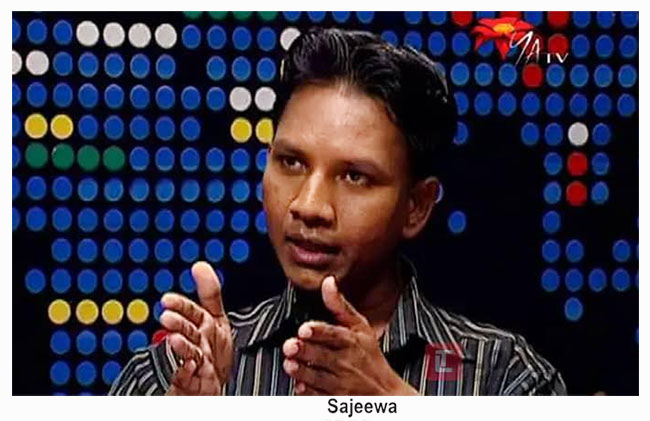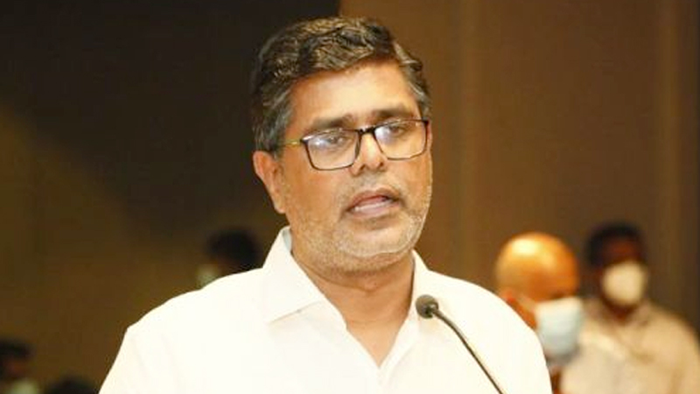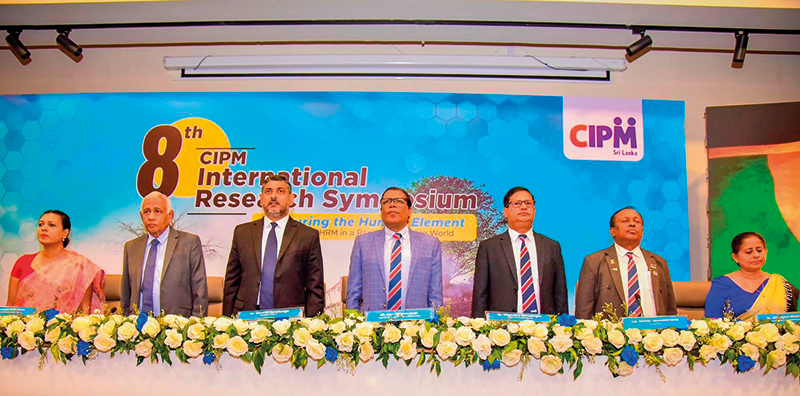News
Tycoons backed by pettifoggers eyeing Wattegama-Kebilitta forest for corn cultivation – MONLAR

By Rathindra Kuruwita
A group of lawyers and businessmen were attempting to take over large swathes of Wattegama – Kebilitta forest reserve for large-scale corn plantation, Sajeewa Chamikara of Movement for Land and Agricultural Reform alleged yesterday.
Chamikara told The Island that people with political backing had been attempting to encroach on land in the reserve for years. “However, officials and grassroots groups in the area have been able to thwart these moves. These racketeers now work with a group of lawyers to exploit the land use policy of this government. If they succeed, there will be an ecological catastrophe.
“This is a forest land protected for decades and in November 2012, the government declared it a forest reserve through a gazette notification 1789/9. The gazette declared 28,926 hectares as the Wattegama – Kebilitta forest reserve.”
The Wattegama-Kebilitta forest reserve is an inter monsoon forest, which is home to a large number of wild animals, including elephants.
This is also the main catchment area of several important water sources of the area including Wila Oya, Kumbukkan Oya, Kotiyagala Wewa and Wattarama Wewa.
Chamikara said that Wila Oya fed 47 tanks, while Kumbukkan Oya 93 tanks and 145 anicuts. The Ratmake Ara and Una Ela, which start from the Wattegama-Kebilitta forest reserve feed a number of tanks outside the reserve. Therefore, almost all farmlands in the area are dependent on this forest reserve. “The forest reserve is a part of a forest network that also includes the Yala National Park and Kumbukkana Forest Reserve,” Chamikara said.
“The Meethotakanaththa Wewa, the Lepolonara Wewa, the Mailla wewa, the Hansaweli wewa and the Warakanaththa wewa that are inside the Wattegama-Kebilitta forest reserve are important sources of water to wild animals. There are many elephants in the areas and they do not enter human settlements because of these tanks and the ample sources of food found inside the forest,” he said.
Research has found that Moneragala is the district with the fourth highest rates of human-elephant conflict. The district also reports significant damage to farms and property by marauding elephants.
“During the last decade, there have been 1,127 reported instances of human elephant conflict. Around 330 humans and elephants have died in the same period. The reason for the spike in cases is the destruction of elephant habitats and feeding grounds and the establishment of large farms that fragment forest areas,” Chamikara said.
According to the Land Use Policy Planning Department, the Moneragala District comprises 563,900 hectares, out of which 296,125 are forests and grasslands. This is 52% of the land area of the district. Although Siyambalanduwa, affected most by the human-elephant conflict in the district, has 41% of forest cover, this has been fragmented greatly in recent years due to large scale farms.
“These farms prevent elephants from freely travelling between forests. The establishment of these farms correlate with the increase in human-elephant conflict in the district. In the past, there was a lot of chena cultivations that only operated in the maha season. They were abandoned in the Yala season and acted as foraging areas for elephants. However, now, these lands are used for corn and sugar cane cultivation which are operational throughout the year. These farms are protected by electric fences, and these compel elephants to maraud villages. If large swaths of Wattegama-Kebilitta forest reserve are given for corn farming, the human elephant conflict in the surrounding areas will skyrocket,” Chamikara warned.
Chamikara said that the Wattegama-Kebilitta forest reserve was linked to a wider network of forests that had hundreds of elephants. The forest reserve was a part of a forest network that also includes the Yala National Park and Kumbukkana Forest Reserve. Lahugala – Kithulana National Park, Bakmitiyawa – Thimbirigolla forest reserve, Kudumbigala – Panama sanctuary and Kumana National Park were also a part of the forest network. Those forests reduced the human-elephant conflict to some extent and disrupting that network to please a few greedy individuals would place thousands of farmers in harm’s way, Chamikara said.
“Sri Lankans are already experiencing the results of deforestation. Even by 1961, we had about 44.2% forest cover (2, 898, 842 hectares.) By 1985, FAO research found that Sri Lanka had a forest cover of 37.5% (2,458,250 hectares.) The number reduced to 31.2% by 1992 (2,046,599 hectares.) By 2010, it was at 29.7% (1,942,219 hectares.) Thus between 1961 and 2010, 947, 370 hectares of forest land had been cleared. 124,992 hectares in the intermediate zone had been cleared between 1992 and 2010, which is half of the total intermediate forests in 1992. The result of this has been chronic water shortages for human consumption and agriculture in districts like Moneragala, a rapid increase in human-elephant conflict, changes in weather and climate patterns and the drop in productivity in agricultural lands. Given this context, the government must not allow large clearings of forest land to plant corn, mainly to feed animals,” he said.
Chamikara said that the Forest Conservation Department officials were desperately attempting to prevent the particular group of businessmen and lawyers from encroaching the Wattegama – Kebilitta forest reserve. Earlier, the government had planned to release 9,960 acres of land under the Forest Conservation Department to farmers of the area. The idea was to promote mixed cropping, which works well in climatic conditions of Moneragala. However, these powerful businessmen were not allowing the transfer of lands to the people as well, Chamikara alleged.
“In recent years, we saw corn being attacked by Sena caterpillars. Even this year thousands of acres of corn were destroyed. This is just an indication of monocropping being a bad system of agriculture and we really shouldn’t allow the destruction of a forest to encourage this unsustainable form of agriculture,” he said.
News
US sports envoys to Lanka to champion youth development

The U.S. Embassy in Colombo welcomed the U.S. Sports Envoys to Sri Lanka, former National Basketball Association (NBA) and Women’s National Basketball Association (WNBA) players Stephen Howard and Astou Ndiaye, from June 8 through 14.
The Public Diplomacy section of the U.S. Embassy said that it would launch a weeklong basketball program intended to harness the unifying power of sports, made possible through collaboration with Foundation of Goodness and IImpact Hoop Lab.
While in Sri Lanka, Howard and Ndiaye, both retired professional basketball players, will conduct a weeklong program, Hoops for Hope: Bridging Borders through Basketball. The Sports Envoys will lead basketball clinics and exhibition matches and engage in leadership sessions in Colombo and Southern Province for youth aged 14-18 from Northern, Uva, Eastern and Western Provinces, offering skills and leadership training both on and off the court. The U.S. Envoys will also share their expertise with the Sri Lanka Basketball Federation, national coaches, and players, furthering the development of basketball in the country. Beyond the clinics, they will collaborate with Sri Lankan schoolchildren to take part in a community service project in the Colombo area.
“We are so proud to welcome Stephen and Astou as our Sports Envoys to Sri Lanka, to build on the strong people-to-people connections between the United States and Sri Lanka,” said U.S. Ambassador Julie Chung. “The lessons that will be shared by our Sports Envoys – communication, teamwork, resilience, inclusion, and conflict resolution – are essential for leadership development, community building, equality, and peace. The U.S. Sports Envoy program is a testament to our belief that sports can be a powerful tool in promoting peace and unity.”
News
Rahuman questions sudden cancellation of leave of CEB employees

SJB Colombo District MP Mujibur Rahuman in parliament demanded to know from the government the reasons for CEB suspending the leave of all its employees until further notice from Thursday.
MP Rahuman said that the CEB has got an acting General Manager anew and the latter yesterday morning issued a circular suspending leave of all CEB employees with immediate effect until further notice.
“We demand that Minister Kanchana Wijesekera should explain this to the House. This circular was issued while this debate on the new Electricity Amendment Bill was pending. There are many who oppose this Bill. The Minister must tell parliament the reason for the urge to cancel the leave of CEB employees,” the MP said.However, Speaker Mahinda Yapa Abeywardena prevented Minister Wijesekera responding to the query and said that the matter raised by MP Rahuman was not relevant.
News
CIPM successfully concludes 8th Annual Symposium

The Chartered Institute of Personnel Management (CIPM) successfully concluded the 8th Annual CIPM Symposium, which took place on 31st May 2024. Themed “Nurturing the Human Element—Redefining HRM in a Rapidly Changing World,” the symposium underscored the pivotal role of human resource management (HRM) in today’s dynamic global landscape. Since its inception in 1959, CIPM has been dedicated to advancing the HR profession through education, professional development, and advocacy, solidifying its position as Sri Lanka’s leading professional body for HRM.
Ken Vijayakumar, the President of the CIPM, graced the occasion as the chief guest. The symposium commenced with the welcome address by the Chairperson, Prof. Arosha Adikaram, followed by the Web Launch of the Symposium Proceedings and Abstract Book by the CIPM President. The event featured distinguished addresses, including a speech by Chief Guest Ken Vijayakumar, President of CIPM, and an address by Guest of Honor Shakthi Ranatunga, Chief Operating Officer of MAS Holdings Pvt. Ltd., Sri Lanka.
The symposium also featured an inspiring keynote address by Prof. Mario Fernando, Professor of Management and Director of the Centre for Cross Cultural Management (CCCM) at the University of Wollongong, Australia.
Vote of Thanks of the inauguration session was delivered by Dr. Dillanjani Weeratunga, Symposium Co-chair.
The symposium served as a comprehensive platform for researchers to present their findings across a wide range of critical topics in HRM. These included Cultural Diversity and Inclusion, Talent Development and Retention, Ethical Leadership and Corporate Social Responsibility, Adapting to Technological Advancements, Mental Health and Well-being at Work, Global Workforce Challenges, Employee Empowerment, and Reskilling and Upskilling.
The plenary session was led by Prof. Wasantha Rajapakse. Certificates were awarded to the best paper presenters during the valedictory session, followed by a vote of thanks delivered by Kamani Perera, Manager of Research and Development.
The annual symposium of CIPM was a truly inclusive event, attracting a diverse audience that spanned undergraduates, graduates, working professionals, research scholars and lecturers. This widespread interest highlights the symposium’s significance in the field of HRM, offering a unique opportunity for everyone to network and learn from scholarly brains.The CIPM International Research Symposium was sponsored by Hambantota International Port, Sri Lanka Institute of Information Technology (SLIIT), E B Creasy & Co. PLC, and Print Xcel Company.





















